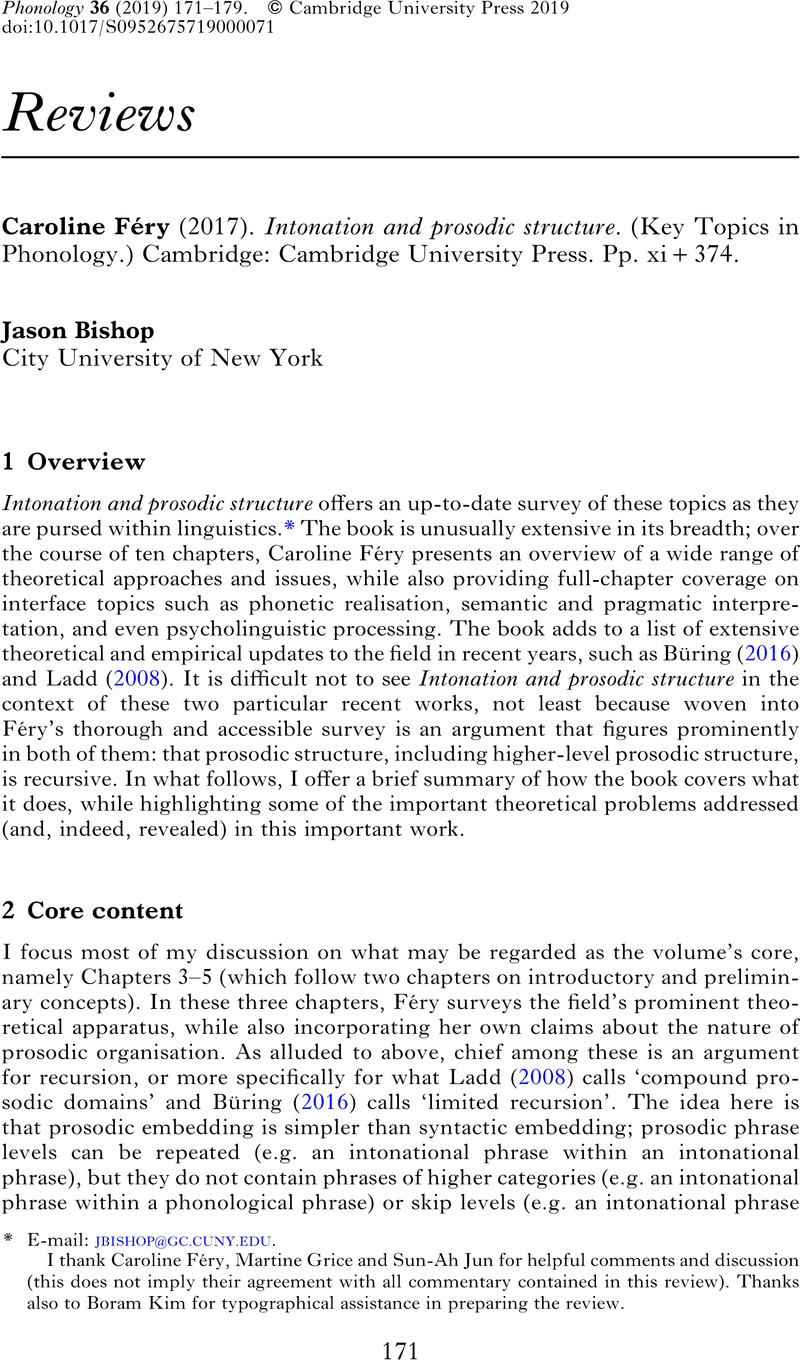Article contents
Caroline Féry (2017). Intonation and prosodic structure. (Key Topics in Phonology.) Cambridge: Cambridge University Press. Pp. xi + 374.
Review products
Published online by Cambridge University Press: 12 April 2019
Abstract

- Type
- Reviews
- Information
- Copyright
- Copyright © Cambridge University Press 2019
Footnotes
I thank Caroline Féry, Martine Grice and Sun-Ah Jun for helpful comments and discussion (this does not imply their agreement with all commentary contained in this review). Thanks also to Boram Kim for typographical assistance in preparing the review.
References
REFERENCES
- 2
- Cited by





